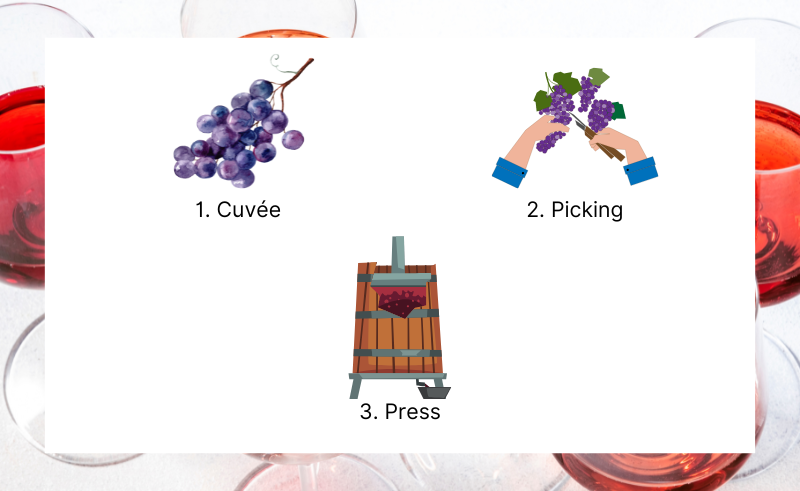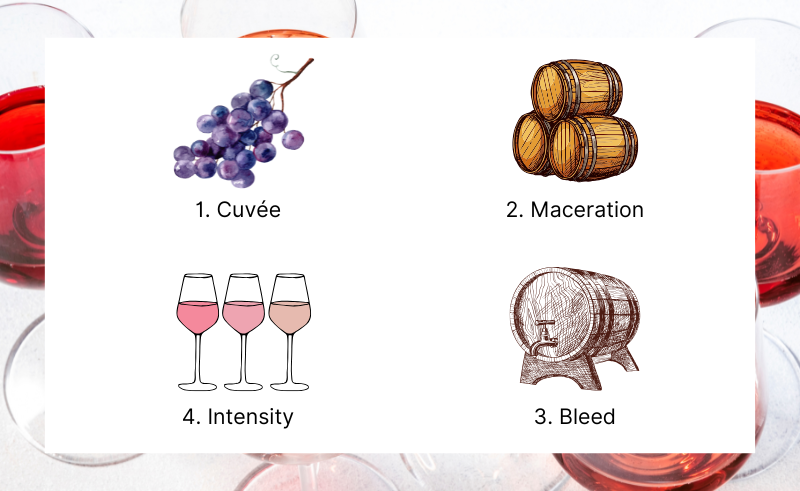Welcome to our Wine Chronicle! Today, we’re going to focus on the famous type of wine, "le rosé."
No, rosé is not a mix of white wine and red wine. Rosé can be made in two different ways: by pressing or by bleeding.
The rosé produced by pressing:
The pressing method uses the same vinification technique as white wine. It involves pressing the grapes directly, along with the juice,
skin, and pulp. The aim is to minimise the amount of time the juice comes into contact with the skin, preventing the pigment from
transferring from the skin to the juice. This is why the wine has a beautiful pink colour. The flavour is delicate, with notes of yellow
fruits, flowers, and citrus.

The rosé produced by bleeding:
To make rosé by bleeding, the vinification technique used for red wine is applied, involving maturation and fermentation where the skin and
juice remain in contact. However, the rosé stays in maceration for a shorter period than red wine. Both rosé and red wine are vinified in
the same vat. The winegrower removes the rosé once the vat reaches the desired colour, and the remainder continues its maceration to produce
red wine.


The choice of grape variety significantly influences the character of rosé wines. Some popular varieties include:
France is undoubtedly the world leader in rosé production and consumption. While Provence remains the benchmark for rosé, a wide variety of
styles are produced across the country.
Here's an overview of the different rosé-producing regions in France:
Provence
Provence is the bastion of French rosé, with 90% of its production dedicated to this color. Provence rosés are generally pale, light, and
fragrant, made primarily from Grenache, Cinsault, Syrah, and sometimes Cabernet Sauvignon or Mourvèdre. Although some are criticized for
lacking character, many estates produce high-quality rosés that reflect their terroir.

Languedoc-Roussillon
The second major rosé-producing region in France, Languedoc-Roussillon offers wines that are generally more colorful and powerful than those from Provence.
The main varieties are:

Other Regions:

AFS staff advice: Combining food and wine